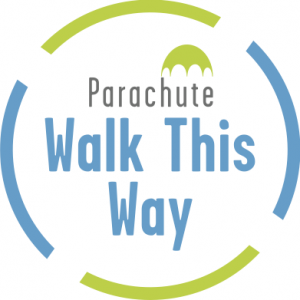
Help make back to school safer for Canadian children
This page was last reviewed on August 27, 2019
TORONTO, Aug. 27, 2019 – As families across Canada prepare for back to school, all road users should remember that pedestrian injuries remain one of the leading causes of injury-related deaths for children 14 years of age and younger.
While there has been a 43-per-cent decrease in the number of pedestrian fatalities in children up to the age of 14 between 2007 and 2016, each death remains a tragedy – most often a preventable one. Injuries to child pedestrians are often severe. They may be left with long-term disabilities, emotional strain and financial burdens that can last a lifetime. Children are most likely to be injured as pedestrians on our roads in September and October. While the most effective way to prevent serious injuries and deaths is to build safer streets, all Canadians can contribute to road safety in their day-to-day lives.
“The No, 1 thing Canadian adults can do to keep children safer on roads is to slow down when they drive,” says Pamela Fuselli, President and CEO of Parachute, Canada’s national charity dedicated to injury prevention. “A pedestrian struck by a car traveling at 50 km/h is at least five times more likely to be killed than a pedestrian struck at 30 km/h.”
Assess the skills your children need to cross the road safely
To cross a street safely by themselves, children need three important skills:
- The ability to decide on and use a safe crossing route
- The ability to properly assess how quickly a vehicle is approaching
- The ability to judge safe gaps in traffic.
To decide when your child is ready to cross by themselves, think about the streets your child will cross on the way to school and assess if your child has all three skills. If they don’t, they will still need to walk with you or another adult. Young children can navigate simple street structure but the skills to navigate more complex environments develop around ages 9 to 11.
Be a role model
If you always use designated crossings and follow traffic signals with your child while walking, expect them to do the same thing when they cross the street independently.
Talk about what you do before you cross a road.
- Teach your child to use their eyes and ears. Always, think, look and listen, even if there is a crossing guard or traffic signals to assist them.
- Teach them to stop at the curb, look left, right and left again, and to listen for oncoming traffic. When the way is clear, or all the cars at the crosswalk or intersection have come to a full stop, teach your child to cross the road and not to double back or run.
- Children should not cross between parked cars, or in the middle of a street, but at a corner or marked crosswalk.
- Also, treat driveways and alleyways as “mini roads” and watch for moving cars. If there are no sidewalks, children should walk-in a single file, away from the road, facing traffic.
For more than 18 years, Parachute and FedEx Express Canada have been delivering Walk This Way, a national pedestrian safety awareness campaign aimed at educating parents and drivers about road safety, while encouraging children to walk safely in their neighbourhoods. Walk This Wayasks drivers to exercise caution, slow down and drive the speed limit in residential areas; and always stop at allschool crossings. Parents are urged to act as role models for their children and demonstrate safe pedestrian practices.
“As a global express transportation company, FedEx Express puts safety above all, both in the workplace and on the road,” says Pina Starnino, Vice President of Operations at FedEx Express Canada. “For us, safety is more than just an essential work practice – it is a commitment to our neighbours in the communities we serve. We are dedicated to helping save lives and developing solutions that responsibly and sustainably make roads safer.”
Another effective way for neighbourhoods to increase local road safety is by becoming a Pace Car community. As part of the Walk This Wayprogram, community members can sign up to become “Pace Car drivers,” pledging to drive respectfully and within speed limits – becoming “mobile speed bumps” to slow traffic – especially in school zones and pedestrian-dense areas. For more information on child pedestrian safety, how to become a Pace Car Community, and the Walk This Way program, visit parachutecanada.org.
Parachute’s Walk This Waypedestrian safety program is generously funded by FedEx to provide year-round education, resources and support for parents and community groups to increase the safety of their streets.
About FedEx Corp.
FedEx Corp. (NYSE: FDX) provides customers and businesses worldwide with a broad portfolio of transportation, e-commerce and business services. With annual revenues of $70 billion, the company offers integrated business solutions through operating companies competing collectively and managed collaboratively, under the respected FedEx brand. Consistently ranked among the world’s most admired and trusted employers, FedEx inspires its more than 450,000 team members to remain focused on safety, the highest ethical and professional standards and the needs of their customers and communities. To learn more about how FedEx connects people and possibilities around the world, please visit about.fedex.com.
About Parachute
Parachute is Canada’s national charity dedicated to reducing the devastating impact of preventable injuries. Unintentional injury is the No. 1 cause of death of Canadians aged 1 to 34, and one child dies each day. The financial toll is staggering, with injury costing the Canadian economy$27 billion a year. Through advocacy and education, Parachute is working to save lives and create a Canada free of serious injuries. For more information, visit us at parachutecanada.org and follow us on Twitter Facebook Instagram and LinkedIn.
-30-
Media contact:
Kelley Teahen, VP, Communications & Marketing, Parachute
647-776-5128
media@parachutecanada.org